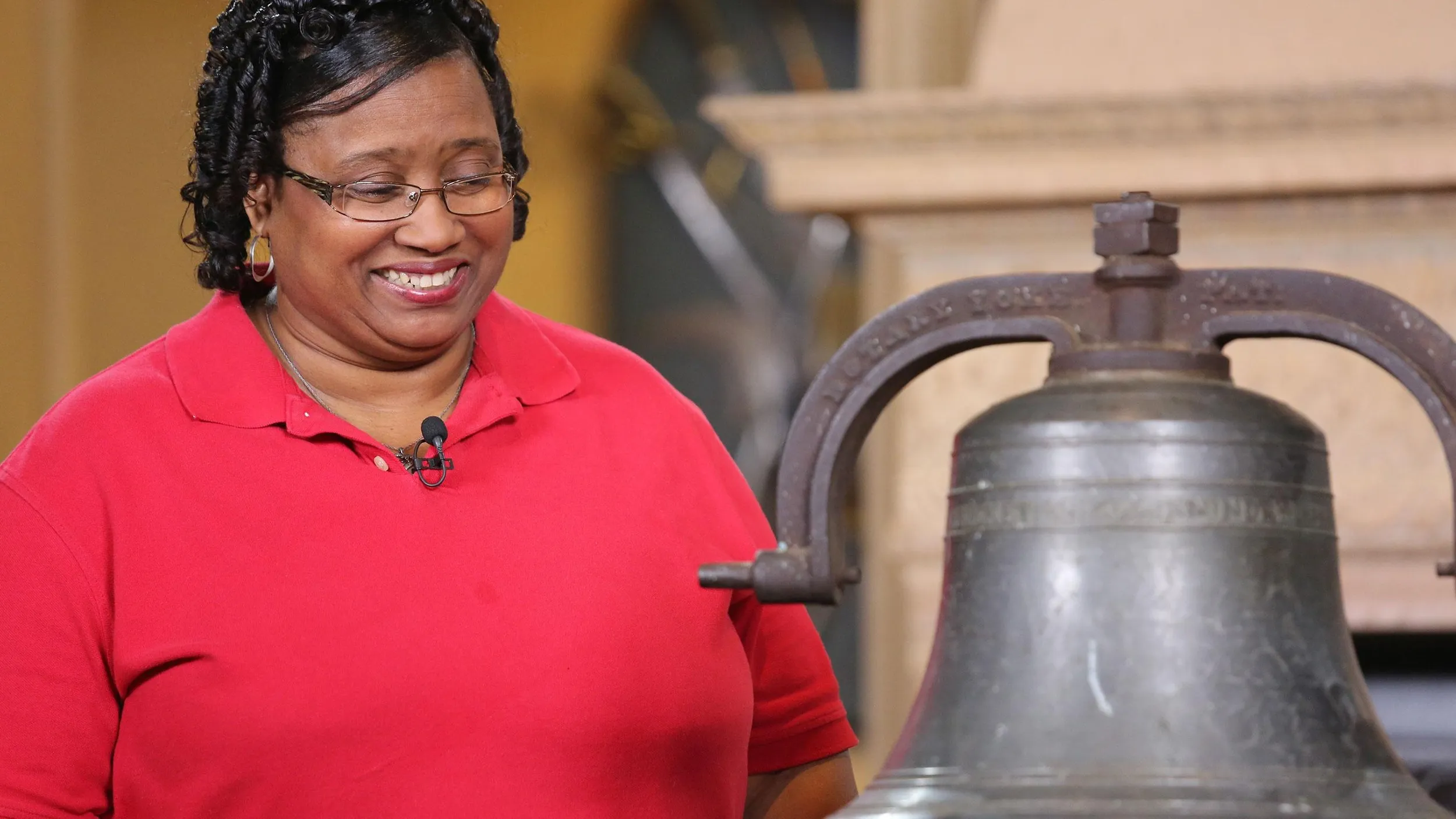GUEST: I brought in something from my family. It's a Civil War cannonball or cannon shot that's been in our family since the 1800s, and I was wanting to know more about it.
APPRAISER: What do you know about it?
GUEST: I don't know the history of how it was found. My family relocated to the Midwest. And since then, the stories have gotten shorter, and I use it for a doorstop now.
APPRAISER: That would work, that would work. Well, because of the shape, these often get referred to by collectors as a "football shell."
GUEST: Uh-huh.
APPRAISER: In 1861, a man named Schenkl in Boston got a patent on this style of shell. And they're very distinctive, because of the ribs...
GUEST: Yeah.
APPRAISER: ...along the body of the shell. They were popular shells, but this one is special. This one was actually a Confederate copy knocking off that patent.
GUEST: Oh. I was going to ask you whether it was the North or South that used it.
APPRAISER: The Union used the standard version...
GUEST: Uh-huh.
APPRAISER: ...but this is purely Confederate. This piece is attributed to the Marshall, Texas, arsenal. That's where the majority of them are believed to have been made.
GUEST: Uh-huh.
APPRAISER: And most all of them are found in that trans-Mississippi area. And there are not many of them found, because they didn't make many of them. It was a very labor-intensive design.
GUEST: Uh-huh.
APPRAISER: And it's made as a solid shot. It's not a shell that was designed to explode. They fired these at forts and artillery emplacements to batter rather than to explode and rain down.
GUEST: Mm-hmm.
APPRAISER: And this one is as pretty as they get.
GUEST: Hmm.
APPRAISER: Have you ever noticed on the base of the shell...
GUEST: Yeah, I was wondering if that was because it had been fired or... what, what caused that?
APPRAISER: That is one of the coolest things about this shell. When they were making these in Marshall, Texas...
GUEST: Uh-huh.
APPRAISER: ...they realized it needed to get straight into service. It didn't have to be finished, the high-quality shells.
GUEST: Oh.
APPRAISER: That is a casting flaw. And they just left it alone, because they needed it in the field, not in the arsenal being finished.
GUEST: Huh.
APPRAISER: And these were fired out of a rifled cannon.
GUEST: Uh-huh.
APPRAISER: And if you notice, it's solid. There's nowhere for the rifling to take...
GUEST: Right.
APPRAISER: ...to put the spin on the shell. When this left the arsenal, it actually had a wooden block that was lathed down on the back to take the rifling of the gun as it was shot out of it.
GUEST: Oh. So, can we tell if this one's been shot or not?
APPRAISER: You can't.
GUEST: Okay.
APPRAISER: There's no way to tell, because it is that solid projectile which artillery collectors refer to as a bolt.
GUEST: Bolt, okay.
APPRAISER: So it's a Schenkl bolt, but it's a Confederate-manufactured Schenkl bolt.
GUEST: Wow.
APPRAISER: And it's absolutely beautiful. On a one-to-ten, this one's going to be at least a nine.
GUEST: Wow. Is it made from brass or, or bronze?
APPRAISER: It's solid iron.
GUEST: Iron, okay.
APPRAISER: Mm-hmm. As with many of the Civil War pieces today, the collecting of Civil War memorabilia has become a hot-button topic. But the climate doesn't affect these kind of shells today. It'll bring as much today as it would three years ago. This piece, on the retail market, would sell these days for about $2,000.
GUEST: (laughing) Wow!
APPRAISER: Is the door you have it stopping worth $2,000?
GUEST: No. It's not going to be a doorstop anymore. No, that's... that's surprising.
APPRAISER: And it could have been taken home as a souvenir, because it is... even then, it was an odd design.



